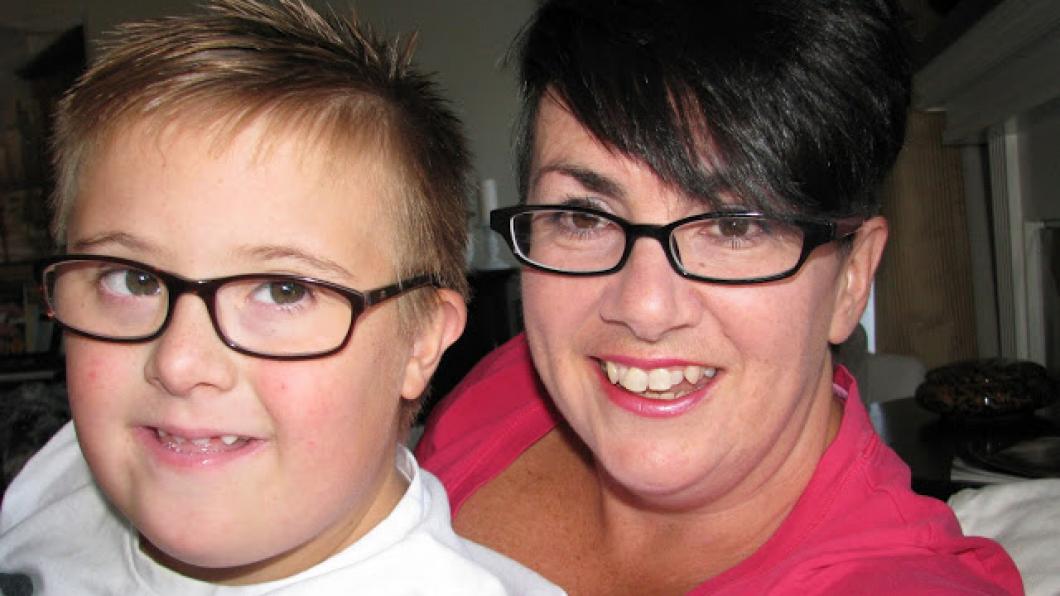
We learned more about 'inclusion' schooling at home
By Lianna Koerner
When I think back to the early days of November 2013, I see my son and myself as strangers.
He is an eight-year-old boy sobbing as he starts his morning routine. I am a confused, harried woman trying to comfort him. He is a boy running away from the school bus at the end of the driveway. I am the woman making apologies to the driver and trying to hide my frustration. Then the boy and woman walk together to school, hand in hand, the boy wearing his backpack. Both sets of shoulders are braced, defensively, for another day of school.
My husband and I believe in full educational inclusion. We sent our son Gabriel to our community school until Grade 3.
But it just didn’t work for Gabriel.
During over four years in the system, the school focused on our son’s “behavioural challenges” and “deficits.” Our days were strung together by negative notes in his daily communication booklet and bookmarked by IEP meetings. The words “reward” and “consequence” would become as offensive as the occasional curse word our son flung about at school.
By Grade 3, our son was emotionally falling apart. In terms of his learning, basic addition and subtraction skills were not on his radar. He didn’t care to participate with peers. French class was a complete mess. One behaviour report after another seeped into every area of our lives. By this time, I wondered if our ideas about inclusion were all wrong.
Our dream of inclusion initially held great promise. By the time Gabriel was three, it was clear that his love for Sandra Boynton and Eric Carle and Rachel Coleman from Signing Time had accelerated his reading skills. He was picking out his big words (sight words hand printed from his favourite books) at a rapid pace. Then he had a successful year at preschool. Everything was on track for him to attend his neighbourhood school. We envisioned a circle of friends surrounding him right from junior kindergarten to high school graduation.
What happened? Were our ideas about inclusion too absolute? Did we not make room for all the human factors in our beliefs? When it comes down to it, inclusion is all about humanity—the good and the bad of it. Somehow, I held onto a “feel good story” about the boy with Down syndrome who has the best school experience ever. I did not want to accept that inclusion at this particular school was not working for Gabriel.
Our son’s despair was enough to challenge us and change our thinking.
The morning we decided to homeschool Gabriel was an opportunity to see him as a whole person again. We could let go of the caricature of a boy created by the negative words the school had used to describe him, in person and on paper.
My son is 10 years old now. He’s the person he’s supposed to be. No one is constricting him with their own ideas of what “special needs” means. He doesn’t label himself, and our loved ones and friends in our social circle respect him. See him. Include him.
Being new to the world of homeschooling was similar to my experience being a new mom to a child with special needs. The homeschool world is full of choices and opportunities that offer support and inspire and motivate my son to experience and enjoy his everyday life.
Every August, I create a curriculum based on Gabriel’s needs. And he determines the pace. We school from early September to the end of June. The Ontario Ministry of Education website offers curriculum expectations as well as policy and resource information. I am a member of the Ontario Federation of Teaching Parents—a wonderful organization to connect with other homeschooling parents and a valuable resource. Through Facebook, I have joined two groups of parents who homeschool their children with special needs. The online accessibility to teaching materials is wonderful and plenty.
And in terms of inclusion? Gabriel is more included now than he was at school!
Gabriel is confident in who he is. He chats easily with our neighbours while dog walking, he conspires with his friends about video-making ideas (he says he wants to be a film maker), he participates in a homeschool Kung Fu class, and he has had a variety of sleepovers. His friends include children with and without special needs, both boys and girls, aged from four years old to 13 years.
Gabriel is also in a program for learners with Down syndrome called Dragonfly. Using dance and creative movement to enhance working memory, he learns about numbers. This program is as close as we have to a “going to school” experience for Gabriel. I drop him off for a half day, once per week and I wait for him to return.
His behaviours can still be difficult, but I can’t help wondering if he’s trying to re-create his school environment—searching for the comfort of the inevitable correction. He refuses prizes of any sort, whether it be from the dentist, doctor or a fun game. He’s not keen on rewards, perhaps a carryover from his school days.
Gabriel is doing well in the program and as a homeschooling child, and as long as he’s happy and moving forward as his own person, then every challenge is worth it.